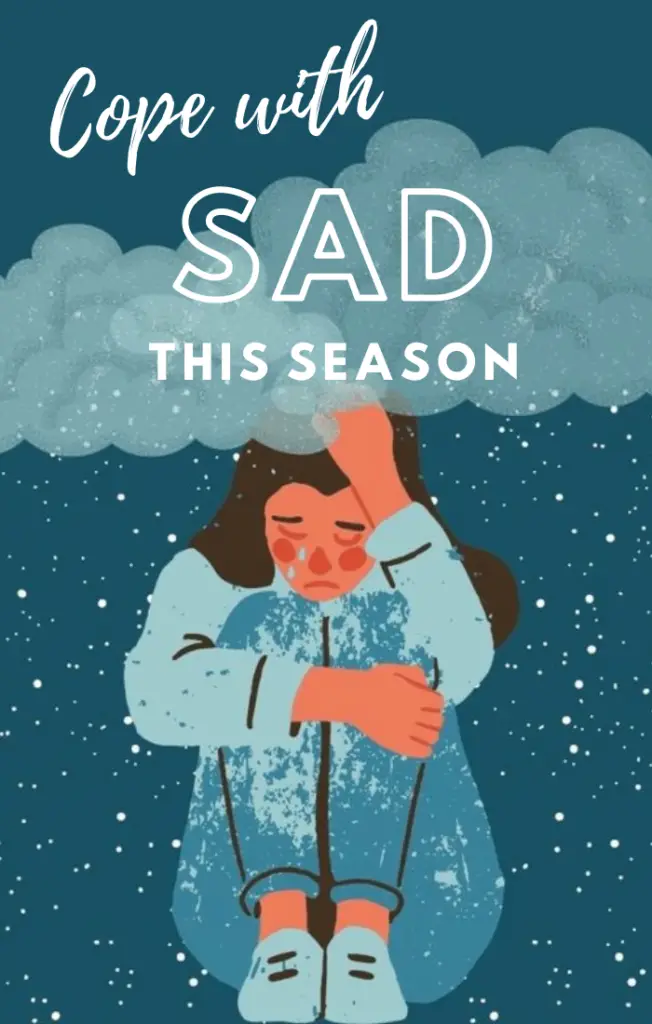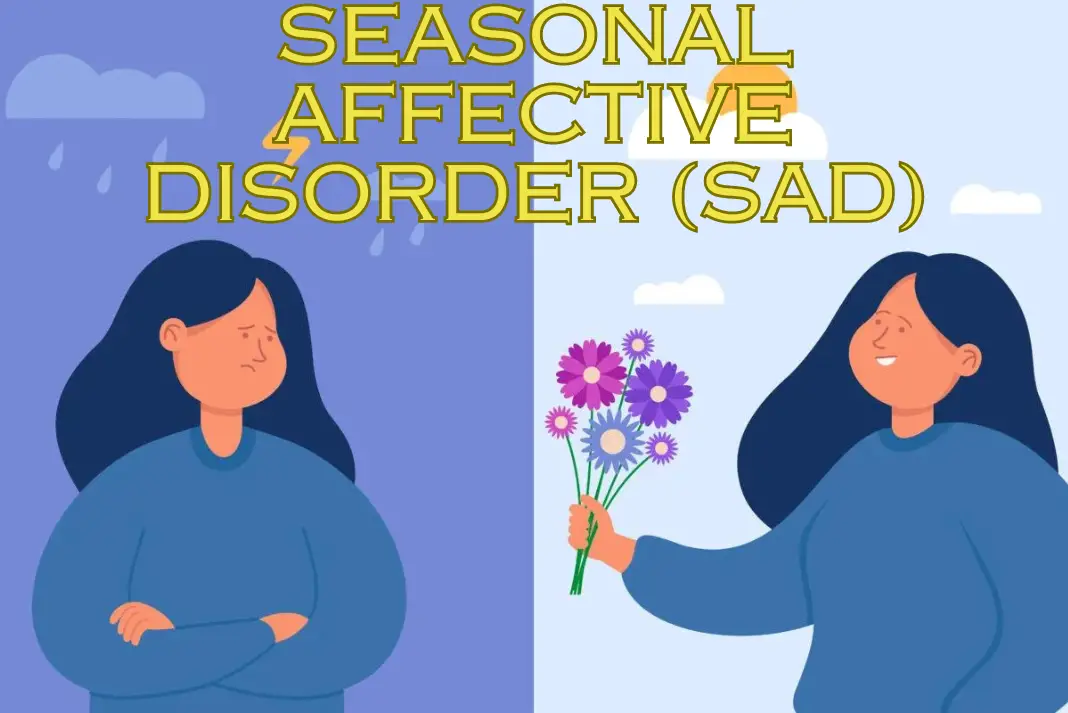Welcome to a journey of understanding and resilience as we explore Seasonal Affective Disorder (SAD). As the seasons alternate, some people discover themselves wrestling with the shadows of this temper ailment. In this article, we delve into the complexities of SAD, shedding mild on its symptoms, reasons, and effects on mental well-being. With insights from experts and a focal point on self-care techniques, we intend to manual you through the shadows, imparting a compass for navigating the demanding situations of Seasonal Affective Disorder. Join us on a course closer to information, resilience, and brighter days beforehand.
Table of Contents
Understanding Seasonal Affective Disorder (SAD)
Seasonal Affective Disorder (SAD) is a form of melancholy that happens at unique instances of the year, usually all through the fall and wintry weather months when sunlight hours are shorter. It is characterized by a pattern of habitual depressive episodes that coincide with the converting seasons and improve with the appearance of spring or summertime.
The specific motive of SAD isn’t always absolutely understood, but factors that include decreased exposure to daylight disrupted circadian rhythms, and adjustments in melatonin and serotonin ranges are believed to play a function. Common signs encompass low strength, irritability, adjustments in sleep patterns, issues concentrating, and a preferred sense of hopelessness. Understanding the nuances of SAD is essential for powerful control and implementing strategies to alleviate its effect on mental health.
Impacts of SAD on Mental Health
Mood Disturbances: SAD regularly results in chronic emotions of unhappiness, hopelessness, and irritability, impacting universal mood and emotional well-being.
Low Energy Levels: Individuals with SAD normally enjoy fatigue and an exquisite lower in energy tiers, making daily activities extra difficult.
Sleep Disruptions: Disturbed sleep patterns, which include insomnia or oversleeping, are common symptoms of SAD, similarly exacerbating emotions of lethargy and fatigue.
Difficulty Concentrating: SAD can have an effect on cognitive features, leading to difficulties in concentrating, making choices, and maintaining consciousness on tasks.
Social Withdrawal: People with SAD might also withdraw from social activities, experiencing a sense of isolation and strained interpersonal relationships.
Changes in Appetite: SAD can contribute to modifications in the urge for food, leading to weight benefit or loss, which in addition influences both physical and intellectual well-being.
Loss of Interest: Individuals may also become bored in activities they once loved, contributing to a dwindled sense of pride and success.
Physical Symptoms: SAD can manifest in bodily signs and symptoms like headaches, body aches, and a standard sense of pain.
Impact on Relationships: The emotional toll of SAD can pressure relationships with own family, friends, and colleagues because of changes in mood and behavior.
Work and Academic Performance: SAD may also have an effect on professional and educational overall performance, with reduced productiveness, extended absenteeism, and difficulties meeting duties.
Recognizing those impacts is critical for early intervention and the implementation of effective coping strategies and remedies.

Diagnosis and Professional Treatment
Exposure to bright mild, simulating natural daylight, can alter circadian rhythms and alleviate signs and symptoms.
Psychotherapy (Cognitive-Behavioral Thttps://trystressmanagement.com/mental-health/cbt-as-treatment-for-depression/herapy – CBT):
Talk remedy helps people pick out and exchange poor idea styles and behaviors related to SAD.
Medication (Antidepressants – SSRIs):
In some instances, healthcare providers may also prescribe antidepressant medicinal drugs to regulate neurotransmitter tiers.
Vitamin D Supplements:
As sunlight publicity is confined to a few seasons, vitamin D supplementation can be endorsed to address deficiencies associated with SAD.
Lifestyle Modifications:
Incorporating everyday exercise, keeping a balanced food regimen, and coping with pressure can complement other remedies.
Mindfulness and Relaxation Techniques:
Practices along with meditation and deep-breathing physical activities can contribute to average well-being.
Establishing a Routine:
Creating a regular each day agenda allows stabilize circadian rhythms and presents a feel of shape.
Support Groups:
Joining help groups or therapy sessions precise to SAD can foster an experience of community and shared studies.
Regular Monitoring and Follow-Ups:
Ongoing evaluation and changes to treatment plans ensure powerful control and deal with evolving wishes.
Self-Help Strategies for Managing SAD
Light Exposure:
Maximize publicity to herbal light by spending time outside during the daytime. Consider the use of mild therapy bins that mimic daylight, specifically all through the darker months.
Physical Activity:
Regular exercise has been proven to enhance mood and power stages. Engage in sports like taking walks, going for walks, or indoor exercises to enhance serotonin and endorphin manufacturing.
Healthy Eating:
Maintain a properly balanced weight loss plan rich in fruits, greens, entire grains, and lean proteins. Certain meals, together with the ones excessive in omega-three fatty acids, might also have mood-enhancing homes.
Sleep Hygiene:
Prioritize appropriate sleep conduct by way of maintaining a constant sleep schedule, creating a calming bedtime routine, and making sure your sleep surroundings is conducive to relaxation.
Social Connections:
Stay connected with friends and a circle of relatives. Even digital interactions can provide emotional aid and fight emotions of isolation.
Creative Pursuits:
Engage in interests or creative sports that deliver joy and success. Painting, writing, or learning a new talent can be therapeutic.
Establishing a Routine:
Create an everyday habit that consists of normal mealtimes, workouts, and rest. Predictability can assist in stabilizing temper and decrease anxiety.
Sunlight Simulation:
Arrange your dwelling or workspace to receive extra herbal light. Open blinds, sit close to windows, or don’t forget the use mild bulbs designed to simulate natural daylight.
Vitamin D Intake:
Ensure good enough consumption of nutrition D through eating regimen or dietary supplements, as deficiencies are related to SAD.
While self-help strategies can be beneficial, individuals experiencing severe or persistent symptoms should seek professional guidance for comprehensive care.

Technology and Apps for Managing SAD
Mood Tracking Apps: Use temper monitoring apps to display emotional well-being, energy levels, and everyday sports. These statistics can be treasured for self-attention and sharing with healthcare professionals.
Fitness and Exercise Apps: Incorporate health apps into your habits to facilitate regular physical hobbies. Many apps offer domestic workouts, making it less complicated to live energetically, even in the absence of outside activities.
Sleep Hygiene Apps: Improve sleep patterns with apps designed to decorate sleep hygiene. These apps frequently offer rest sounds, sleep tracking, and tips for setting up a consistent sleep agenda.
Virtual Support Communities: Join online communities or forums where individuals with SAD proportion studies and coping techniques. Connecting with others dealing with similar challenges can offer assistance and a sense of community.
Weather and Sunlight Tracking Apps: Stay informed about daylight patterns and weather adjustments through the usage of apps that offer actual-time updates. Knowing whilst herbal light is to be had can assist in optimizing publicity.
Journaling Apps: Maintain a digital journal to express thoughts and emotions. Some apps provide activities for gratitude, mirrored image, or temper monitoring, promoting self-reflection and emotional processing.
Telehealth Platforms: Explore telehealth structures that connect users with mental fitness professionals remotely. These systems permit individuals to get admission to therapy sessions, counseling, or psychiatric consultations from the comfort of their homes.
Reminder Apps: Set reminders for everyday sports, such as taking breaks for mild publicity, working out, or practicing mindfulness. Consistent workouts are critical for handling SAD symptoms.
Conclusion
Embarking on the adventure of knowledge and navigating Seasonal Affective Disorder (SAD) has brought us through the shadows, dropping mild on its complexities and effects on intellectual well-being. With insights from specialists and a focal point on self-care strategies, this exploration aimed to provide a compass for the ones going through the demanding situations of SAD. Recognizing temper disturbances, low electricity degrees, sleep disruptions, and different influences is important for imposing effective coping techniques and looking for professional remedies when wanted.
From mild remedy and psychotherapy to self-assist strategies like light publicity, bodily interest, and mindfulness, a comprehensive method can enhance resilience. Technology and apps provide valuable help, but it’s crucial to supplement them with a holistic method to properly. As we finish this journey, allow us to embrace the resilience within, navigate the seasons with know-how, and sit up for brighter days ahead.


